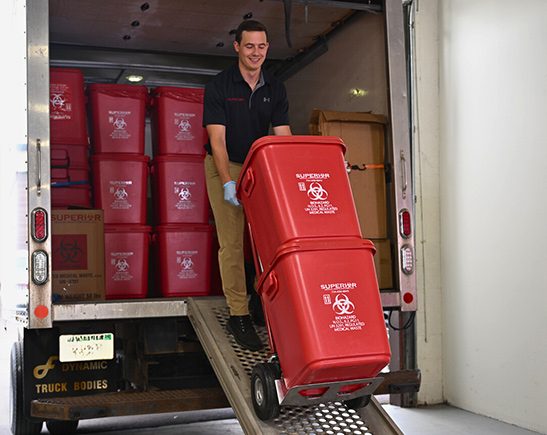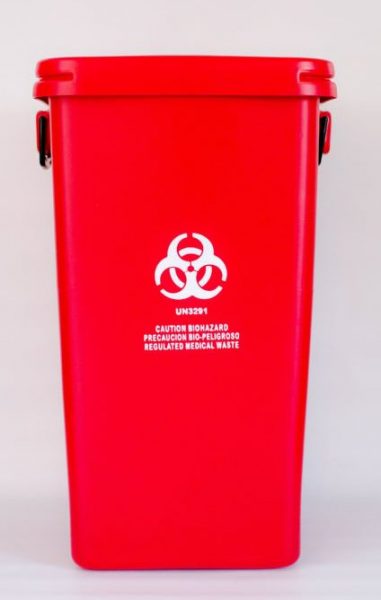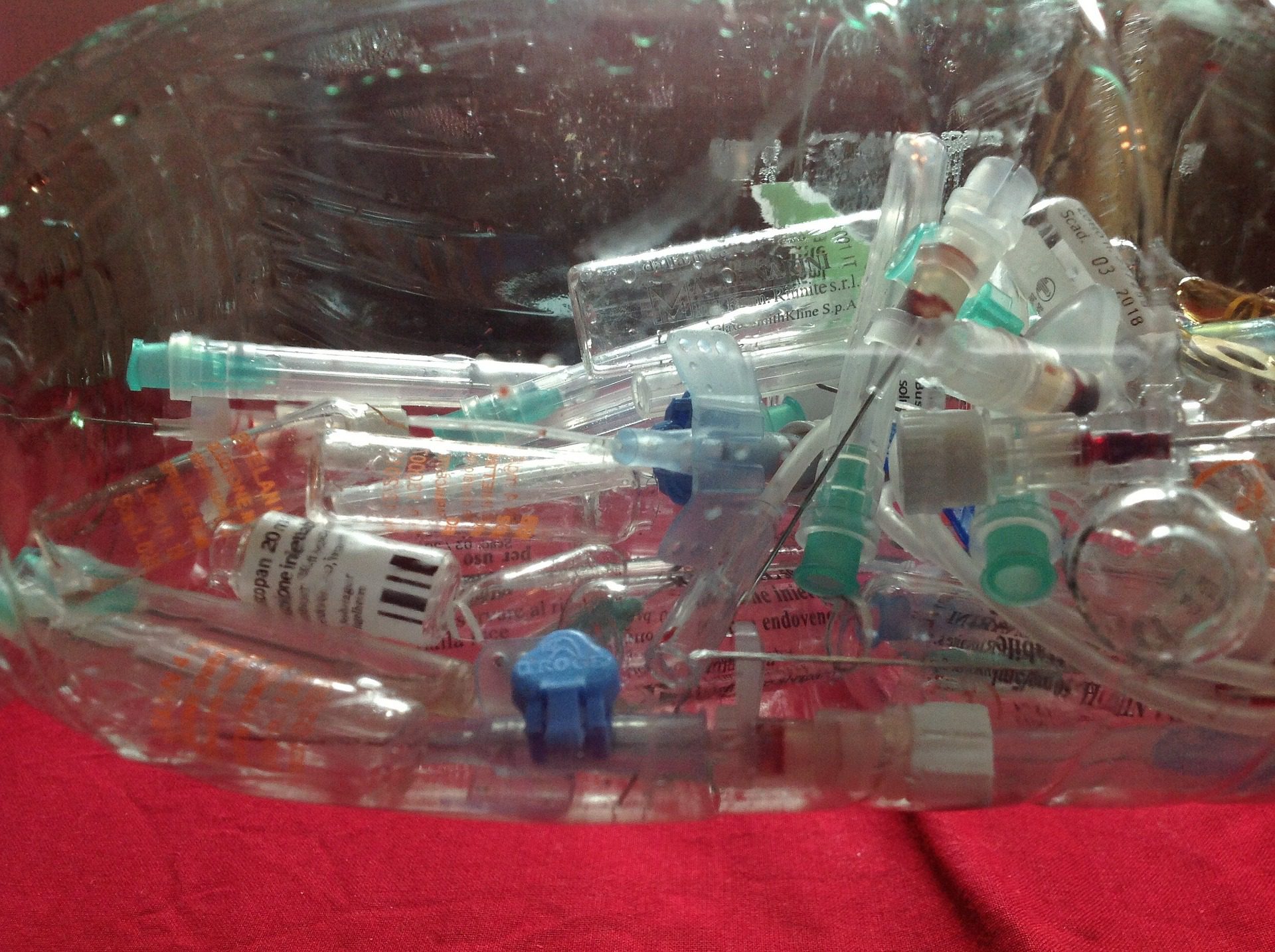Medical Waste Removal Mastery: Where Service Excellence Satisfies Health And Wellness Requirements
Medical Waste Removal Mastery: Where Service Excellence Satisfies Health And Wellness Requirements
Blog Article
Keep Ahead of Regulations: Specialist Recommendations on Medical Waste Disposal
In a world where the healthcare market is regularly advancing, it is crucial for clinical facilities to remain ahead of regulations when it comes to the proper disposal of medical waste. From comprehending the various groups of clinical waste to executing the right collection and partition techniques, this discussion will certainly supply workable ideas and useful insights to help facilities remain in advance of laws in the ever-changing landscape of medical waste disposal.
Comprehending Medical Waste Categories
Recognizing medical waste groups is necessary for proper disposal and administration in health care facilities. Clinical waste describes any waste produced by healthcare activities that might present a hazard to public health or the atmosphere. It is essential to classify medical waste precisely to ensure its safe handling, disposal, transport, and treatment.
There are numerous classifications of medical waste that healthcare centers require to be accustomed to. One of the most usual groups consist of transmittable waste, pathological waste, sharps waste, pharmaceutical waste, and chemical waste. Each group has certain standards and policies for its proper monitoring and disposal.
Pathological waste refers to human cells, body organs, or body parts that call for unique handling and disposal. Drug waste makes up run out, extra, or polluted medications that require cautious handling and disposal.
Remaining Up-To-Date With Regulatory Modifications
Staying present with regulatory adjustments is critical for health care facilities to ensure conformity and appropriate management of medical garbage disposal. medical waste removal services. With guidelines constantly progressing, it is vital for healthcare facilities to remain up-to-date to avoid fines, penalties, and prospective injury to the environment and public health
To remain ahead of regulative changes, healthcare centers need to develop a system for surveillance and tracking updates. This can be done by registering for governing newsletters, participating in workshops and seminars, and proactively taking part in industry organizations. Additionally, centers must assign a personnel or group responsible for staying notified and disseminating details to appropriate stakeholders.
Routine interaction with regulative companies is also vital. Health care centers should develop relationships with neighborhood, state, and federal agencies to guarantee they recognize any changes in regulations that may impact their waste administration methods. This can be done through normal meetings, involvement in public comment durations, and proactive involvement with regulatory firms.
In addition, healthcare facilities need to consider partnering with waste management firms that concentrate on clinical garbage disposal (medical waste disposal services with WasteX). These business are typically fluent in the current guidelines and can supply support and support to guarantee conformity
Carrying Out Correct Collection and Partition Techniques
To successfully handle medical garbage disposal, health care centers must establish correct collection and partition techniques in accordance with regulative guidelines. Executing these techniques makes sure the safe handling and disposal of possibly unsafe products, protects the setting, and lessens the threat of infections and injuries to health care workers and the public.
Proper collection and segregation methods entail the use of assigned containers and labeling systems. Healthcare facilities need to supply clearly identified containers for various kinds of clinical waste, such as sharps, transmittable waste, pharmaceutical waste, and non-hazardous waste. These containers must be color-coded and plainly marked to avoid complication and advertise simple identification.
Additionally, medical care centers ought to educate their staff on the right procedures for collecting and setting apart clinical waste. This consists of educating them on the different sorts of waste, the ideal containers to use, and the value of following standards and regulations. Normal training sessions and correspondence course should be performed to make sure that team members remain updated on finest practices.
Moreover, healthcare centers you can try here should develop a system for regular collection and disposal of medical waste. This may include partnering with certified waste management business that focus on medical waste disposal. These business will guarantee that the collected waste is transferred and thrown away in conformity with governing demands.
Choosing the Right Disposal Methods

Incineration is just one of one of the most typical and efficient approaches for throwing away particular kinds of medical waste, such as pathological waste and sharps. It involves the controlled combustion of waste at heats, decreasing it to ash. Incineration can release harmful pollutants into the air and contribute to air contamination.

Various other disposal techniques include chemical therapy, microwave treatment, and landfilling. Chemical therapy involves the use of chemicals to decontaminate and neutralize the waste. Microwave therapy uses microwave power to warm and sanitize the waste. Landfilling includes burying the waste in a designated land fill location (medical waste disposal services with WasteX). Nevertheless, landfilling needs to be the last hope as a result of the prospective threat of contamination to dirt and groundwater.
Making Sure Conformity With Documentation and Training
After carefully taking into consideration the proper disposal methods for clinical waste, healthcare facilities must guarantee conformity with guidelines and reduce environmental influence by carrying out effective paperwork and training treatments. This action is critical in preserving a lasting and risk-free environment for both medical care employees and the public.

Training is just as vital in guaranteeing conformity with guidelines. Healthcare employees who take care of clinical waste ought to receive suitable training on waste partition, handling, and disposal procedures. This training needs to cover topics such as the correct use of individual safety tools, identification of various sorts of waste, and the correct disposal approaches for each and every waste category. By offering detailed training, health care facilities can equip their team to make educated decisions and reduce the danger of inappropriate waste disposal.
Conclusion
Finally, remaining in advance of laws in clinical waste disposal is critical for healthcare centers. medical waste removal near me. Understanding the different classifications of clinical waste, remaining updated with regulatory changes, carrying out appropriate collection and partition methods, picking the proper disposal approaches, and ensuring compliance via documents and training are all necessary steps. By complying with these guidelines, medical care companies can efficiently dispose and manage of clinical waste in a liable and risk-free manner
From recognizing the different classifications of clinical waste to carrying out the ideal collection and segregation techniques, this discussion will certainly offer useful insights and actionable pointers to aid facilities stay in advance of laws in the ever-changing landscape of clinical waste disposal. - medical waste disposal services with WasteX
The most typical categories include contagious waste, pathological waste, sharps waste, pharmaceutical waste, and chemical waste. Medical care centers should provide clearly classified containers for various types of medical waste, such as sharps, infectious waste, pharmaceutical waste, and non-hazardous waste. Health care facilities ought to develop a detailed system to videotape and track all facets of clinical waste disposal, consisting of kinds of waste created, amounts, and disposal approaches made use of. Medical care employees that take care of clinical waste needs to obtain ideal training on waste partition, taking care of, and disposal treatments.
Report this page